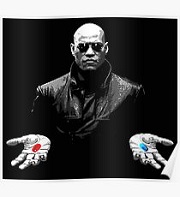(Total Views: 312)
Posted On: 12/23/2019 8:44:18 AM
Post# of 157001
That is a good one from 2003 talking about just that, the importance of it and ”PRO 140 may offer distinct tolerability and therapeutic profiles in man.“
The 2000 paper, I believe is the first with just pro 140, after the choice was made with two main selling points.
https://jvi.asm.org/content/75/2/579.short
CR5 serves as a requisite fusion coreceptor for clinically relevant strains of human immunodeficiency virus type 1 (HIV-1) and provides a promising target for antiviral therapy. However, no study to date has examined whether monoclonal antibodies, small molecules, or other nonchemokine agents possess broad-spectrumactivity against the major genetic subtypes of HIV-1. PRO 140 (PA14) is an anti-CCR5 monoclonal antibody that potently inhibits HIV-1 entry at concentrations that do not affect CCR5’s chemokine receptor activity. In this study, PRO 140 was tested against a panel of primary HIV-1 isolates selected for their genotypic andgeographic diversity. In quantitative assays of viral infectivity, PRO 140 was compared with RANTES, a natural CCR5 ligand that can inhibit HIV-1 entry by receptor down regulation as well as receptor blockade.Despite their divergent mechanisms of action and binding epitopes on CCR5, low nanomolar concentrations of both PRO 140 and RANTES inhibited infection of primary peripheral blood mononuclear cells (PBMC) byall CCR5-using (R5) viruses tested. This is consistent with there being a highly restricted pattern of CCR5 usage by R5 viruses. In addition, a panel of 25 subtype C South African R5 viruses were broadly inhibited by PRO 140, RANTES, and TAK-779, although;30-fold-higher concentrations of the last compound were required. Interestingly, significant inhibition of a dual tropic subtype C virus was also observed. Whereas PRO140 potently inhibited HIV-1 replication in both PBMC and primary macrophages, RANTES exhibited limited antiviral activity in macrophage cultures. Thus CCR5-targeting agents such as PRO 140 can demonstrate potent and genetic-subtype-independent anti-HIV-1 activity
The 2000 paper, I believe is the first with just pro 140, after the choice was made with two main selling points.
https://jvi.asm.org/content/75/2/579.short
CR5 serves as a requisite fusion coreceptor for clinically relevant strains of human immunodeficiency virus type 1 (HIV-1) and provides a promising target for antiviral therapy. However, no study to date has examined whether monoclonal antibodies, small molecules, or other nonchemokine agents possess broad-spectrumactivity against the major genetic subtypes of HIV-1. PRO 140 (PA14) is an anti-CCR5 monoclonal antibody that potently inhibits HIV-1 entry at concentrations that do not affect CCR5’s chemokine receptor activity. In this study, PRO 140 was tested against a panel of primary HIV-1 isolates selected for their genotypic andgeographic diversity. In quantitative assays of viral infectivity, PRO 140 was compared with RANTES, a natural CCR5 ligand that can inhibit HIV-1 entry by receptor down regulation as well as receptor blockade.Despite their divergent mechanisms of action and binding epitopes on CCR5, low nanomolar concentrations of both PRO 140 and RANTES inhibited infection of primary peripheral blood mononuclear cells (PBMC) byall CCR5-using (R5) viruses tested. This is consistent with there being a highly restricted pattern of CCR5 usage by R5 viruses. In addition, a panel of 25 subtype C South African R5 viruses were broadly inhibited by PRO 140, RANTES, and TAK-779, although;30-fold-higher concentrations of the last compound were required. Interestingly, significant inhibition of a dual tropic subtype C virus was also observed. Whereas PRO140 potently inhibited HIV-1 replication in both PBMC and primary macrophages, RANTES exhibited limited antiviral activity in macrophage cultures. Thus CCR5-targeting agents such as PRO 140 can demonstrate potent and genetic-subtype-independent anti-HIV-1 activity

